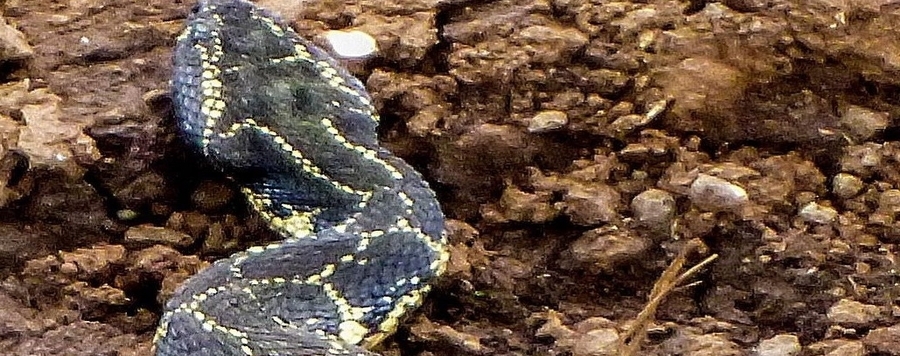
New species of Bitis
A new species of viperine viperid snake is described, Bitis harenna sp. nov. The new species is a member of the subgenus Macrocerastes based on it having three scales separating the nasal and rostral shields, and on the combination of ‘divisions’ of dorsal scale rows on the upper flanks and ‘fusions’ of rows on the lower flanks. Bitis harenna sp. nov. is distinguished from other members of the subgenus by its unique colour pattern, posterior parietal flange on the lateral wall of the braincase, and possibly by differences in scalation and head proportions. Only a single museum specimen is known, a female collected from ‘Dodola’ in Ethiopia probably in the late 1960s and previously identified as a possibly unusually coloured and patterned B. parviocula. A live, presumably male, specimen very closely resembling the holotype of Bitis harenna sp. nov. was photographed on the Harenna escarpment of the Bale Mountains National Park, Ethiopia in 2013, providing secure occurrence data and evidence that the holotype is not a uniquely aberrant specimen. A revised key to the species of Bitis in Ethiopia is presented. Aspects of body scalation are compared among species of the subgenus Macrocerastes and between species of Macrocerastes and Bitis, and several systematic characters are highlighted and clarified.





